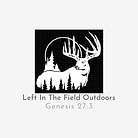Where is the Rut?
- Brian R. Kightlinger

- Nov 17, 2021
- 4 min read
Like most hunters, I get excited and look forward to hunting at the end of October and the first part of November. This is the time when bucks are on the move during the day, hitting scrapes and fighting to breed. No matter where you are in the northern part of the United States, hunters sit all day and work hard to close the deal on a mature buck.
In my home state of Pennsylvania, the rut usually heats up during the second and third week of November. I have killed most of my mature bucks during the second week of November while hunting mock scrapes. Since bucks are more active during daylight hours during this time, I use the mock scrapes to my advantage. This strategy has worked well for me over the past twelve years.

Buck hitting a mock scrape in the morning in 2020!
During the 2021 season, I didn't see much rutting activity during the three weeks of November. My SpyPoint trail cameras captured very few mature bucks hitting mock scapes and on their feet during the day. My cameras told a different story this year, with most of the activity happening at night. This didn't make much sense to me because the weather seemed perfect for plenty of deer activity and an aggressive rut. So what happened this year?
I don't believe there is one specific thing that can pinpoint why there was a nonexistent rut. Talking with hunters from other areas of Pennsylvania and even other states, their rut information seemed average for the area. In my area of Northwestern Pennsylvania, what I saw was significantly different from what other hunters were seeing. Here is what I believe was influencing my hunting area and the rut.
The first area I can focus on is deer, the number of mature bucks in my hunting area. Usually, in my hunting area, there are numerous mature bucks. This year I saw fewer mature bucks in my hunting area. A high percentage of the bucks I caught on camera or while hunting were 1.5 and 2.5-year-olds. I feel this is a definite factor in why I saw a slow rut. These younger age class bucks are still learning to rut and rutting behavior. Many times while hunting, I saw younger bucks still in bachelor groups well into November. At night when I would go spotting, I saw only a few mature bucks checking does, and the younger deer seemed too afraid to get near any mature does.
Does, does, and more does! Where I hunt, the number of does is very high. Over the past five years, my children and I have filled multiple antlerless tags each season. Still, the number of does is off the charts! It was not uncommon for me to see 25-40 doe during the summer and during the season while scouting. With so many does available, there seems to be little competition to breed. This would explain why the rut seemed to trickle in and never get going. The younger bucks in the area don't have to work hard or compete against each other. I believe many of the younger bucks will do a significant amount of the breeding this year.
Another kink in the armor for this year is the overwhelming amount of standing corn where I live. Every deer needs to feed, and right now, there is a substantial amount of food available for them that will also provide them protection. My son and I spend a great deal of time putting in food plots where we hunt, and this year the deer have been using them sparingly. The majority of the deer seem to be in the large cornfields where they can eat all they want and not be bothered. I do believe there are a few mature bucks that are using these fields for food and protection. Plus, with the amount of mature does eating in the fields, the bucks can find easy access to breeding. Why would a buck leave security, food, and does that are all in one area? My children are hoping that the farmers will harvest the corn before the start of PA gun season.
Lastly, I believe the slow rut was also affected by the number of hunters where I live. Pennsylvania has a healthy population of hunters. Since the legalization of the crossbow, more hunters are taking advantage of the archery season, which brings added pressure to deer. Just so there is no discussion, I am 100% in favor of crossbow hunters! With more hunters in the woods, hunters know deer will go nocturnal. Many mature bucks will stay nocturnal during the rut if they do not have to leave a particular area because they have food, cover, and plenty of does to breed.

Nocturnal buck working the vertical vine.
After experiencing the slow 2021 rut, these are my feelings about what has caused this to happen. I know every area and state is different, but I am hearing many hunters saying the same thing. "Where was the rut?" I am very interested in feedback from hunters all over the country. Please feel free to comment on what you saw for the rut this year. As my children are getting ready for rifle season, they pray that the mature bucks will be on their feet. I hope they will stay nocturnal, so they survive another year and show me an impressive rut next year.

























Comments